Auction sheets are essential when buying used cars, especially from international markets like Japan. They provide critical details about a car’s condition, including its history, damage, repairs, and overall grade. However, not all auction sheets look the same. Each auction house has its unique format and grading system, which can sometimes confuse buyers. Knowing how to identify and interpret auction sheets from different auction houses is key to making informed decisions.
In this blog post, we’ll explore how to recognize and understand the auction sheet formats from various auction houses, and why it’s important for buyers to be familiar with these differences.
Why Do Auction Sheet Formats Differ?
Each auction house has its own set of standards for inspecting vehicles, and this is reflected in the format of their auction sheets. While the core information is often the same—such as the car’s condition, mileage, and any visible damage—the layout, symbols, grading scales, and even the level of detail can vary widely.
The auction house’s reputation, target market, and operating procedures can all influence how they design their auction sheets. As a buyer, it’s essential to understand these differences so you can properly assess the vehicle’s condition and avoid any surprises later on.
Key Differences in Auction Sheets Across Major Auction Houses
1. USS Auction House
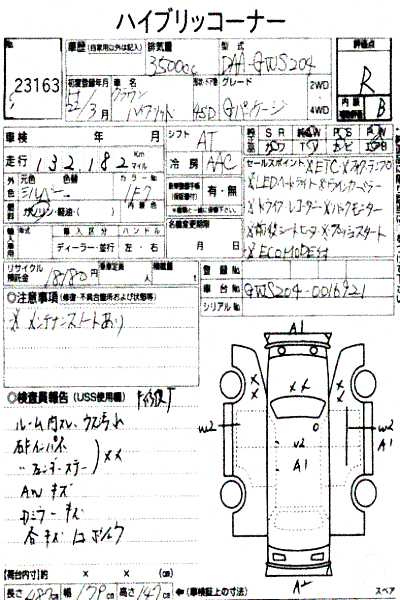
The USS Auction House (Used Car System Solutions) is the largest auction house in Japan. Their auction sheets are among the most widely used and trusted.
- Auction Sheet Formats: USS auction sheets have a clear, structured layout. Key information such as the car’s grade is prominently displayed in the top right corner.
- Grade: They use a grading system from 0 to 5 for the overall condition, where 5 is almost new and 0 indicates a car with severe issues. They also provide a letter grade for the car’s interior and exterior.
- Damage Diagram: USS auction sheets include a damage diagram that shows any scratches, dents, or repairs with specific symbols.
How to Identify It: Look for the USS logo on the sheet and the detailed damage diagram. The layout will be clean with clear sections for different aspects of the car’s condition. In most causes USS auction house does not share their data online with third parties, so if your auction record not found mostly likely it is from USS auctions.
2. CAA Auction House
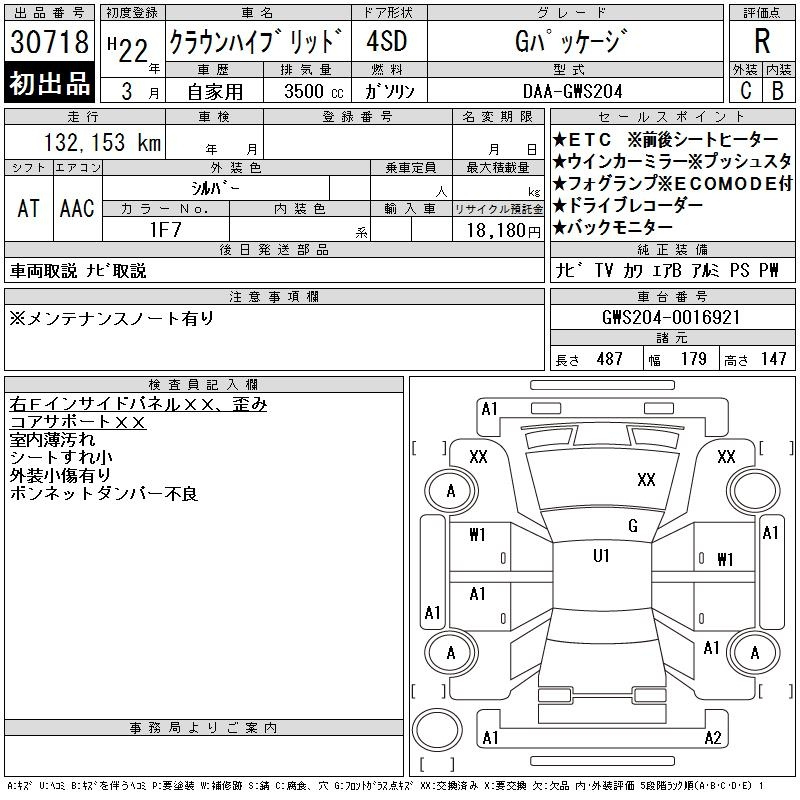
The CAA (Chubu Auto Auction) is another major player in the Japanese used car auction market. Their auction sheets are known for being detailed but follow a different format from USS.
- Auction Sheet Formats: CAA auction sheets have a more complex design. The grading system and damage symbols may look similar to USS, but the layout is different, with the car grade often found in the middle section.
- Grade: CAA uses a similar 0-5 scale, but they are known for being a bit stricter in their grading. Cars graded as 4 or above are often in very good condition.
- Additional Details: CAA auction sheets provide more specific comments about the car’s condition and history, usually found in a box at the bottom of the sheet.
How to Identify It: The CAA logo will be at the top, and you’ll notice a slightly more text-heavy sheet, with additional comments on the vehicle’s condition.
3. HAA Kobe Auction House
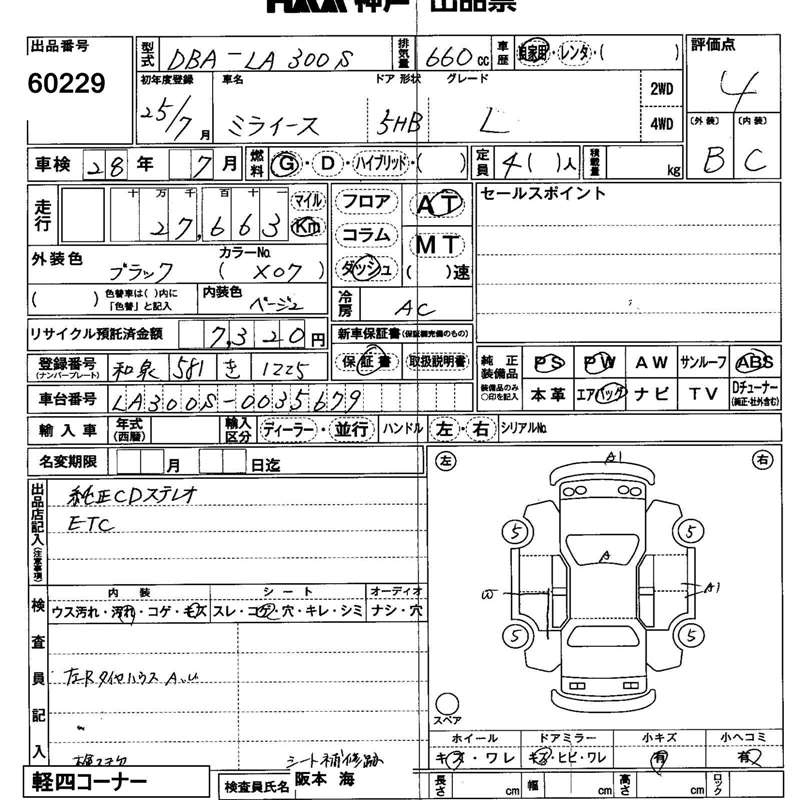
HAA Kobe (Hanaten Auto Auction) is well known for its high standards in vehicle grading, making it one of the more reliable auction houses in Japan.
- Auction Sheet Formats: HAA Kobe auction sheets tend to be very detailed, with sections for both mechanical condition and exterior/interior condition. The sheet uses various symbols and numbers to highlight specific issues.
- Grade: Like USS, HAA Kobe uses a 0-5 grading system but places more emphasis on the auctioneer’s comments about the car’s condition.
- Damage Notes: Damage and repair history is usually highlighted in a special comments section, making it easier to see if the car has been in an accident or undergone significant repairs.
How to Identify It: The HAA Kobe logo is clearly displayed at the top. Look for the detailed mechanical condition section that other auction houses may not provide.
4. AucNet Auction House

AucNet is another well-known Japanese auction house with a reputation for transparency and accuracy. Their auction sheets are designed to be straightforward and easy to read.
- Auction Sheet Formats: AucNet auction sheets are usually simpler in design compared to USS or CAA. They provide key information at a glance, with less reliance on symbols and more on written descriptions.
- Grade: AucNet uses the standard 0-5 grading system, but they often include additional sub-grades for various parts of the car, such as the engine, transmission, and interior.
- Vehicle History: AucNet is known for including detailed vehicle history reports, giving buyers more confidence in the car’s background.
How to Identify It: Look for the AucNet logo and the simple, streamlined format. The vehicle history section is also a key feature.
5. Honda Auctions
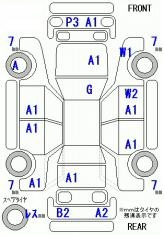
6. JU Gifu
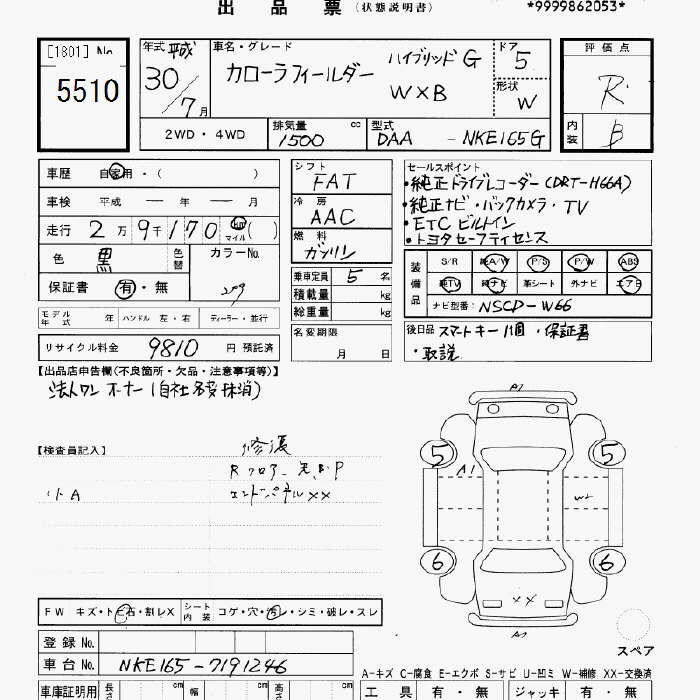
7. TAA Hiroshima
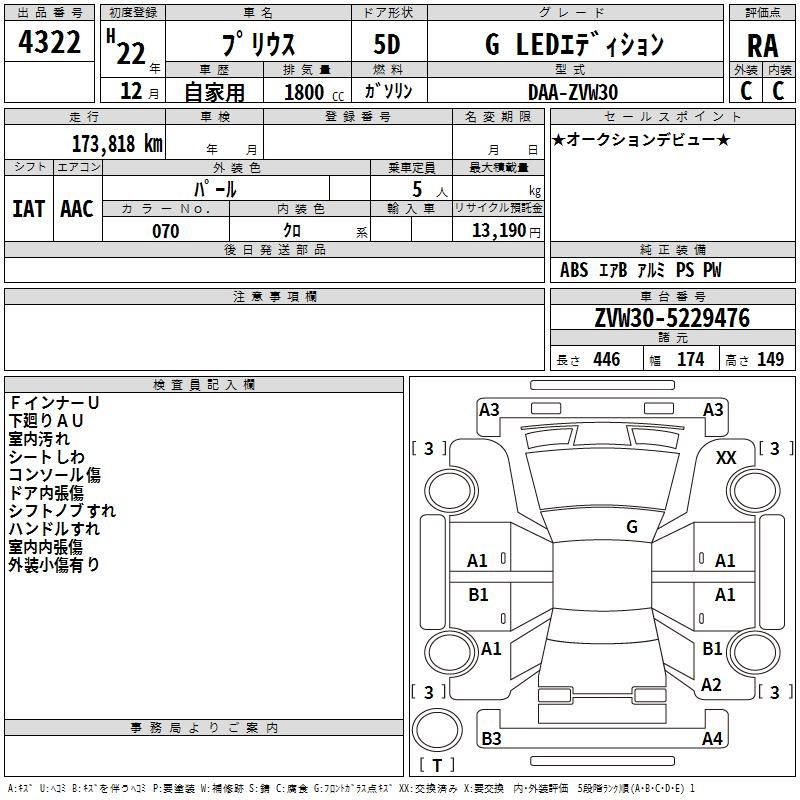
8. NAA Nagoya
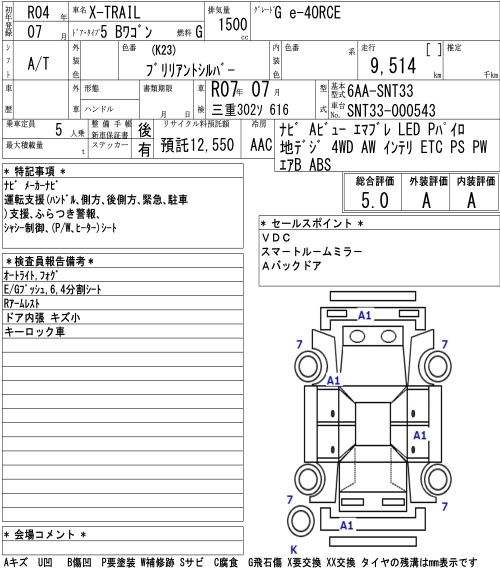
9. ARAI Bayside
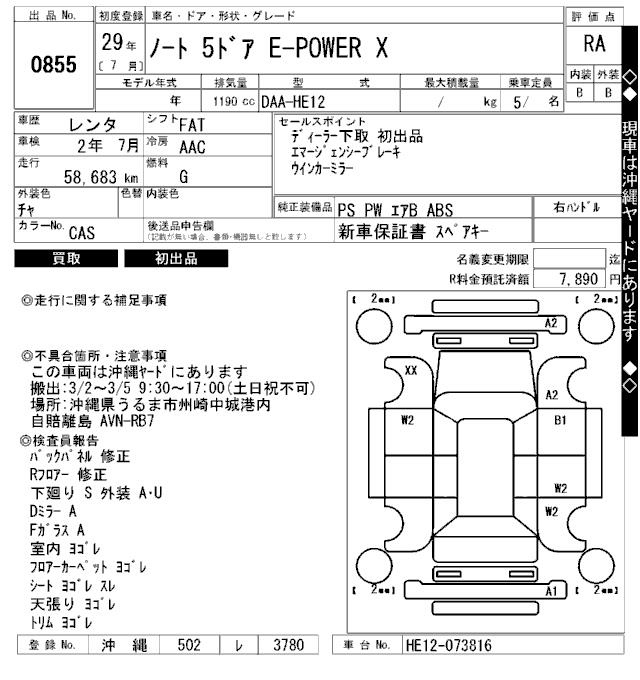
10. TAA Yokohama
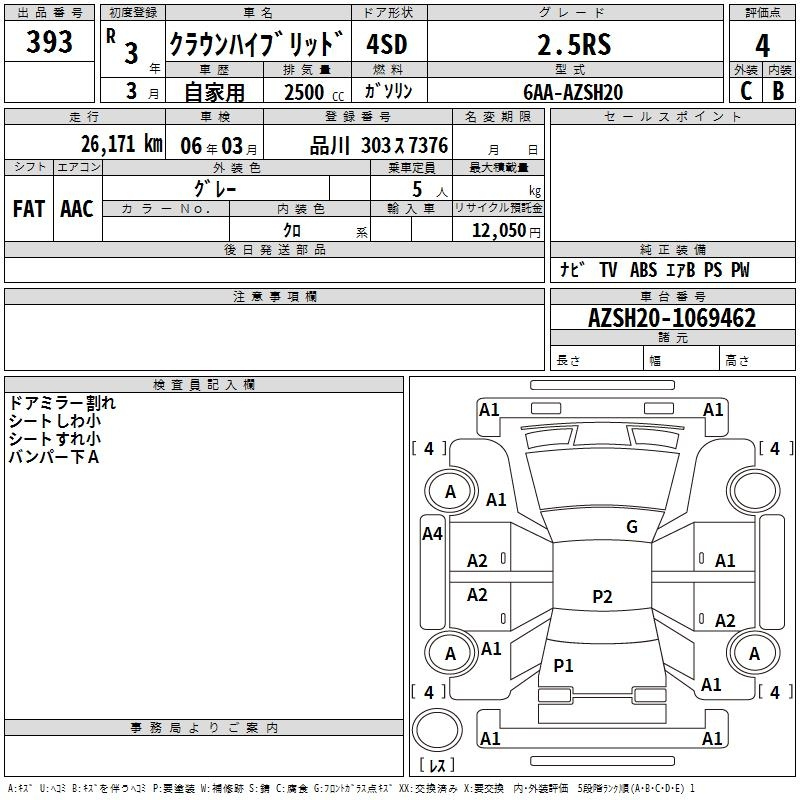
11. ZERO Chiba
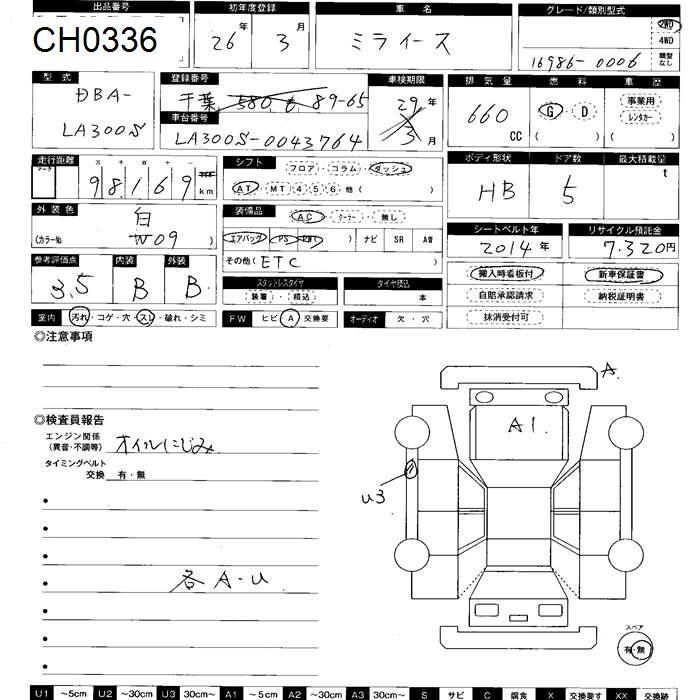
12. LUM Fukuoka

13. MIRIVE Saitama
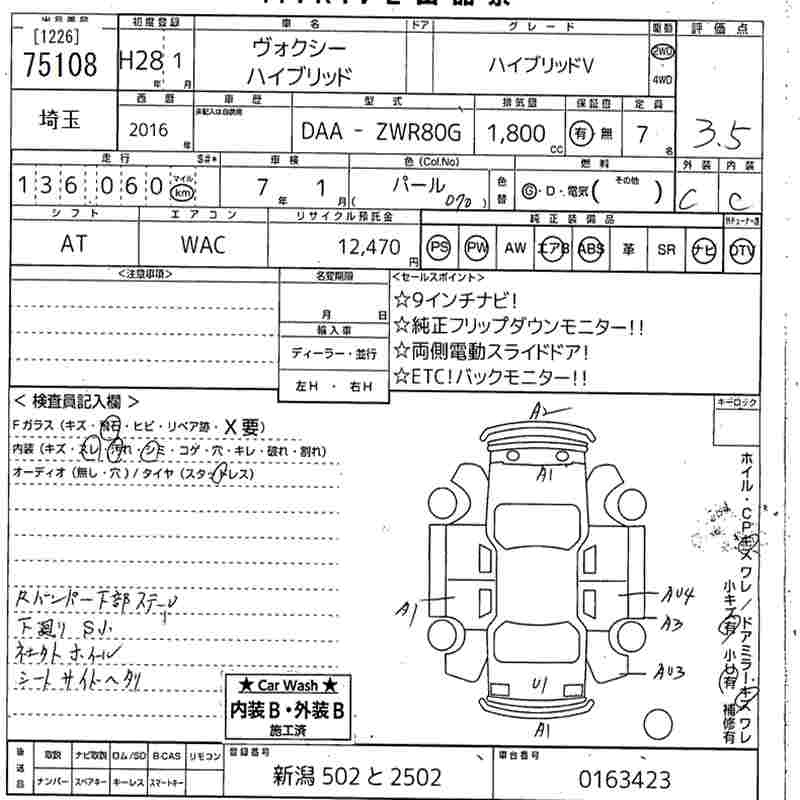
Symbols and Markings to Look For
No matter which auction house the auction sheet comes from, most of them use similar symbols to indicate damage or repairs. Understanding these symbols is crucial for identifying potential issues with the car. Here are some of the most common symbols you’ll encounter:
- A: Scratch (軽い傷)
- U: Dent (軽いへこみ)
- W: Wavy paint or panel
- XX: Replaced parts
- P: Paintwork
- S: Rust
Each auction house may have slight variations in how they present these symbols, but they generally follow the same pattern. Make sure to check the legend or key on the auction sheet to fully understand the markings.
How to Cross-Check Auction Sheets from Different Houses
To ensure you’re interpreting the auction sheet correctly, it’s important to cross-check key elements:
- Grade Comparison: Understand that a Grade 4 from USS might not be the same as a Grade 4 from HAA Kobe. Some auction houses are stricter than others, so always consider the reputation of the auction house when evaluating grades.
- Damage Diagrams: Look closely at the damage diagram. Auction houses use similar symbols, but some may include more detail than others. Compare the symbols and their meanings if you’re looking at sheets from different houses.
- Additional Comments: Check the written comments carefully. Auction houses like CAA often provide more descriptive notes, which can give you a better understanding of the car’s condition compared to houses that rely more on symbols.
- Vehicle History: Auction houses like AucNet include detailed history reports, which may not be available from other houses. Always look for this section to verify if the car has had major accidents or repairs.
Why It’s Important to Recognize Auction Sheet Formats
Being able to identify auction sheet formats from different auction houses helps you make more informed decisions when buying a car. It ensures you understand the car’s true condition and can spot potential red flags that might not be immediately obvious. Familiarity with different formats also helps you avoid scams or fake auction sheets from sellers who might try to present the car in a better light than it deserves.
Conclusion
Auction sheets from different auction houses vary in format, grading systems, and level of detail. Understanding these differences is crucial when checking a used car for purchase, especially when buying from international markets like Japan. Whether you’re dealing with USS, CAA, HAA Kobe, or AucNet, knowing how to interpret the auction sheet will help you avoid costly mistakes and ensure you’re making the best investment.
By familiarizing yourself with these formats and symbols, you can confidently assess any auction sheet and make informed decisions about the cars you’re considering.
FAQs
1. Which auction house provides the most detailed auction sheets?
- Auction houses like HAA Kobe and CAA are known for providing detailed auction sheets, often including additional notes about the car’s mechanical condition.
2. Are auction sheets always reliable?
- While auction sheets provide valuable information, they should always be verified. For auction sheet verification, cross-check the information with other sources, like JP Sheet.
3. Do auction sheet symbols mean the same thing across auction houses?
- For the most part, yes. However, it’s important to check the legend on each auction sheet to ensure you’re interpreting the symbols correctly.
4. How can I get a translation of an auction sheet?
- Many online services and car import agencies offer professional translation services for auction sheets, helping you understand the document fully.